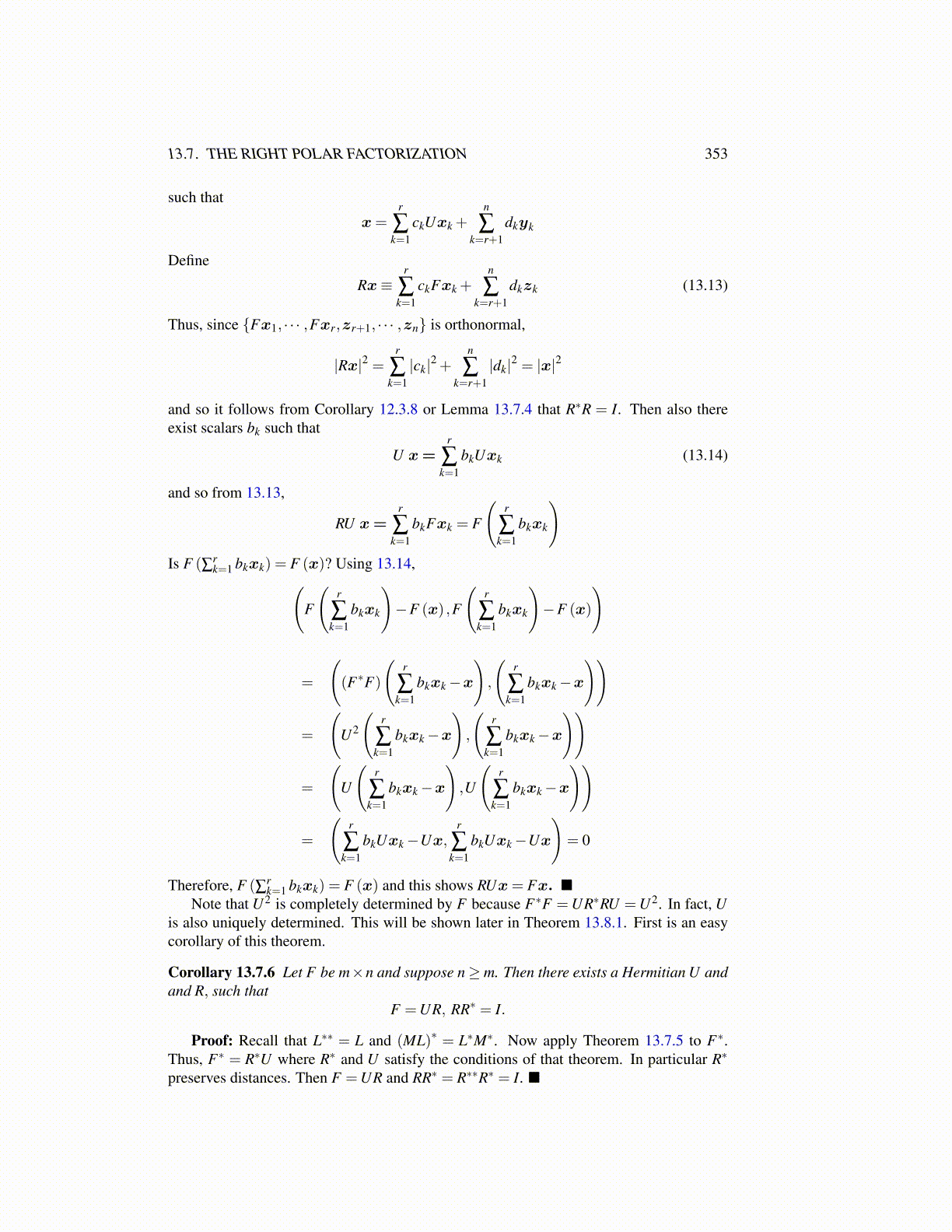
13.7. THE RIGHT POLAR FACTORIZATION 353
such that
x=r
∑k=1
ckUxk +n
∑k=r+1
dkyk
Define
Rx≡r
∑k=1
ckFxk +n
∑k=r+1
dkzk (13.13)
Thus, since {Fx1, · · · ,Fxr,zr+1, · · · ,zn} is orthonormal,
|Rx|2 =r
∑k=1|ck|2 +
n
∑k=r+1
|dk|2 = |x|2
and so it follows from Corollary 12.3.8 or Lemma 13.7.4 that R∗R = I. Then also thereexist scalars bk such that
U x=r
∑k=1
bkUxk (13.14)
and so from 13.13,
RU x=r
∑k=1
bkFxk = F
(r
∑k=1
bkxk
)Is F (∑r
k=1 bkxk) = F (x)? Using 13.14,(F
(r
∑k=1
bkxk
)−F (x) ,F
(r
∑k=1
bkxk
)−F (x)
)
=
((F∗F)
(r
∑k=1
bkxk−x
),
(r
∑k=1
bkxk−x
))
=
(U2
(r
∑k=1
bkxk−x
),
(r
∑k=1
bkxk−x
))
=
(U
(r
∑k=1
bkxk−x
),U
(r
∑k=1
bkxk−x
))
=
(r
∑k=1
bkUxk−Ux,r
∑k=1
bkUxk−Ux
)= 0
Therefore, F (∑rk=1 bkxk) = F (x) and this shows RUx= Fx. ■
Note that U2 is completely determined by F because F∗F =UR∗RU =U2. In fact, Uis also uniquely determined. This will be shown later in Theorem 13.8.1. First is an easycorollary of this theorem.
Corollary 13.7.6 Let F be m×n and suppose n≥m. Then there exists a Hermitian U andand R, such that
F =UR, RR∗ = I.
Proof: Recall that L∗∗ = L and (ML)∗ = L∗M∗. Now apply Theorem 13.7.5 to F∗.Thus, F∗ = R∗U where R∗ and U satisfy the conditions of that theorem. In particular R∗
preserves distances. Then F =UR and RR∗ = R∗∗R∗ = I. ■